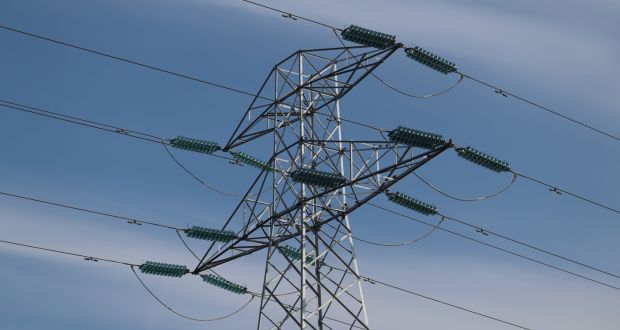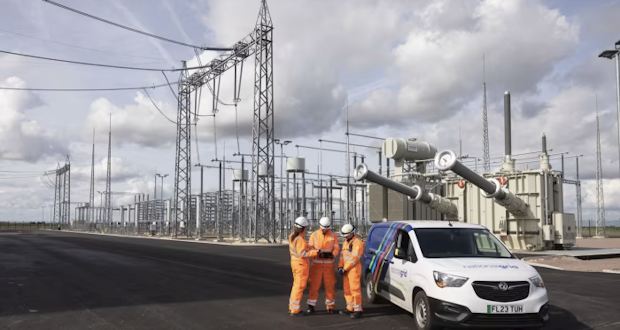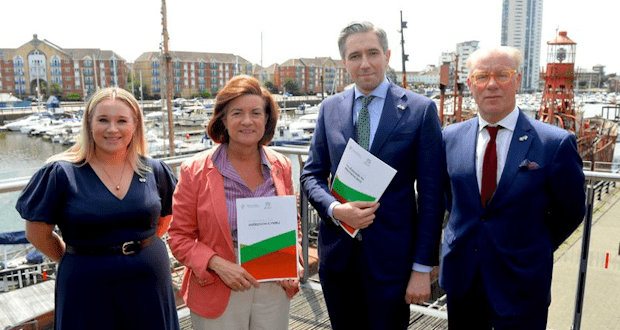“The document considers the balance between supply and demand for Ireland and Northern Ireland between 2021 and 2030 and reports on our work as TSOs,” says David McGowan, the future networks team lead with SONI, Northern Ireland’s electricity transmission system operator (TSO) and part of EirGrid Group. “We consulted widely with industry and other stakeholders in preparing the statement.”
The report finds that despite a short-term reduction in electricity use due to Covid-19, demand in Ireland is on the rise and, long term, will increase significantly due to the expected continued growth of large energy users.
“That strong level of demand growth is a good sign,” says McGowan. “It reflects anticipated economic, employment and population growth. Also, the Irish government’s Climate Action Plan with its targets for electric vehicles and heat pumps, along with increased public demand for the electrification of other services and activities, will drive overall electricity demand upwards over the period.”
Plants retiring
That demand growth will be accompanied by a reduction in conventional generating capacity. “The report predicts that over the course of the next five years around 1,650 megawatts [MW] of generation will retire in Ireland, with up to a further 600MW retiring in Northern Ireland,” he adds.
The issue for the two TSOs is how to bridge that gap between rising demand and falling generation capacity. EirGrid and SONI do not generate any power themselves, their role is to manage the grids which transmit it from the generators to the users.
“Our job is to understand where the surpluses and deficits will arise,” McGowan explains. “The report sends out a signal to the market in relation to what will be required to meet capacity needs between now and 2030.”
And the clear message is that new conventional generating capacity will be needed. While most of the increased demand will be met from wind and solar energy as the power system is reshaped to meet the Government target of at least 70 per cent of electricity generation coming from renewable sources by 2030, there will still be a shortfall.
“It is clear from the report that new, cleaner gas-fired generation plant is required now to address the issue, especially for when wind and solar generation is low,” says McGowan. “Appropriate volumes of dispatchable flexible gas generation are critical to support the transition to a low-carbon power system into the next decade, as we move to 70 per cent renewables by 2030 and, ultimately, a zero-carbon power system.”
The Commission for Regulation of Utilities (CRU) concurs, and in its security of supply information note published in September indicated that it has developed a programme of work actions to address the situation. These actions include the delivery of more than 2,000MW of enduring flexible gas-fired generation capacity by 2030; the procurement of up to 300MW of temporary emergency; and extending the operation, on a temporary basis, of older generators to delay the loss of up to 1,200MW of existing capacity.
Demand-side response
Other actions led by EirGrid will also play a role. These include demand-side response and the Celtic interconnector with France. In demand-side response large energy users can reduce their demand when the system is under stress. “They can have their own generation facilities to provide dispatchable power or they can switch demand to another jurisdiction. There is an opportunity for demand-side participants to sell into the market.”
The data-centre sector cannot be ignored in all of this, and EirGrid estimates that it will grow to represent 23 per cent of demand in Ireland by 2030. “EirGrid recognises the important role that data centres will play in the future energy system and look forward to working with the industry and the CRU to implement the new policy in relation to the sector,” says McGowan.
That new policy sets out criteria that EirGrid and ESB Networks are required to consider in assessing data-centre connection applications. The criteria relate to the location of the data centre applicant with respect to whether they are within a constrained or unconstrained region of the electricity system; the ability of the applicant to bring onsite dispatchable generation or storage capacity equivalent to or greater than their demand; and their ability to provide flexibility in their demand by reducing consumption when requested to do so.
“The aim of the GCS is to create awareness of the situation and we are working with all stakeholders to create solutions to the problem. We have set up an alarm, but we hope it doesn’t go off.”
Original Article – https://www.irishtimes.com/sponsored/innovation-partner-profiles/eirgrid-planning-for-decade-of-growth-in-electricity-demand-1.4755127



